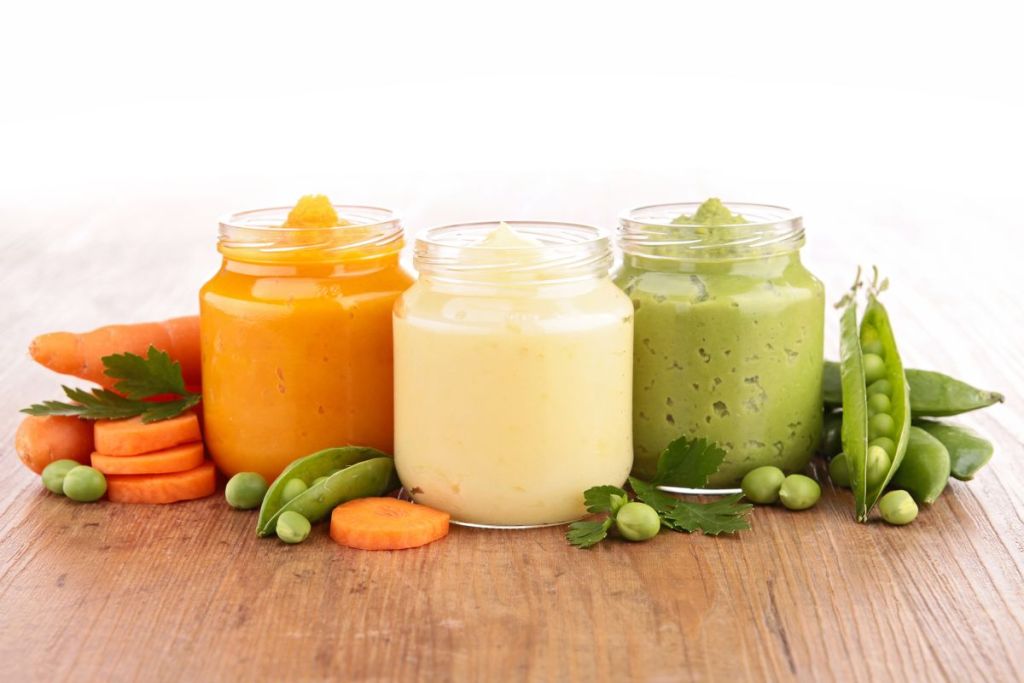These days, it is so incredibly easy to walk into a grocery store where you can grab a bunch of baby food and pay for it. It is convenient to do and an easy go-to during those crazy busy nights. But did you know that commercial baby food may not be as nutritious as homemade baby food? It’s true. When you make your own baby food at home for your little one, you are giving them more vitamins and minerals. At around 6 months, babies tend to take an interest in solid food. It’s important to make sure that your baby is ready. We’ll show you how to make your own baby food, and you might never go back to store-bought. Not only is it more inexpensive, but it’s better for your baby.
How to make your own baby food
Do you need a fancy machine?
While there have been plenty of different baby food-making machines out there on the market today, you honestly do not have to go out and purchase any kind of gadget in order to make food for your baby. A regular blender will do if you are chopping things up. The same goes for cooking the vegetables before you make them into a puree. You do not need to purchase any kind of steaming basket made for making baby food.

Vegetables and Fruits
When it comes to vegetables, the more babies eat when they are young, the more they are apt to enjoy the same food when they get a little older, too. As far as vegetables go, they are rather easy to make. You can either use fresh vegetables or even frozen ones, as long as they are cooked fully before turning them into baby food. While boiling gets the job done, steamers are a bit better if you have one. It can really break down the veggies and fruits without breaking down the nutrients.
Make baby food in a rice cooker
Believe it or not, you can even make baby food right in your rice cooker, or if you have an Instant Pot, even better! A great way to cook everything altogether is to use your cooker (as long it has a steaming basket), and then everything will be done at the same time. At that point, when it is, you can puree it in a blender or food processor. You’ll have delicious baby food that they will love, and it will cook in an instant. When you are blending it, be sure that it is smooth enough for your baby. You could always add a little bit of water or breast milk (fresh).
Freeze it
The one mistake parents seem to make when they are creating their own homemade baby food is being overzealous about it and making way too much. If you want to make some to freeze, that is a great idea, because you can just grab one during the evening and let it defrost, and boom – your little one has dinner! This freezing method can take time off of your busy dinner schedule to make sure that baby gets nutritious and delicious homemade food. Unfrozen baby food can stay in the refrigerator for up to two days. You don’t want to feed them the food past that date for safety reasons.
Baby food with meat
Meat, you say? “Babies can’t have meat!” So many people believe that. Babies can have meat when it is blended up and pureed perfectly. This goes for pretty much any meat, beef, chicken, etc. But it has to be blended perfectly, so keep some of that cooking juice nearby to thin it out if it needs it. Chicken is a meat that is good for children, with it being rich in protein and the amino acid tryptophan. The same thing goes for beef as well. Cook very well until tender and then start pureeing it, making sure that it is chunk-free for baby. Babies need to be 9-12 months to eat meat.

Mix it up
When you have the hang of making your own baby food, you’ll want to do it all the time. When you are ready to move onto combinations, your baby will be in for a delicious surprise. There are various foods that pair well together. Some of them include, avocados and bananas, quinoa, flax and sweet potato, even pineapple and pear. These are delicious treats that your baby will love.
It would be prudent, though, to speak with your child’s pediatrician about starting them on solid foods. They may be ready, but it is just better to check with the doctor to double-check. Some things that you may want to remember when you are making your own baby food is to mind your cleanliness. Wash your hands, over and over, if you have to. The last thing you want is to transfer germs. As far as introducing new foods, it is best to try one new food every two days to watch out and to make sure that your child has no allergies to said food.
With homemade baby food, you can rest assured that you know exactly what your little one is consuming. After all, peace of mind is worth its weight in gold as a new parent.


